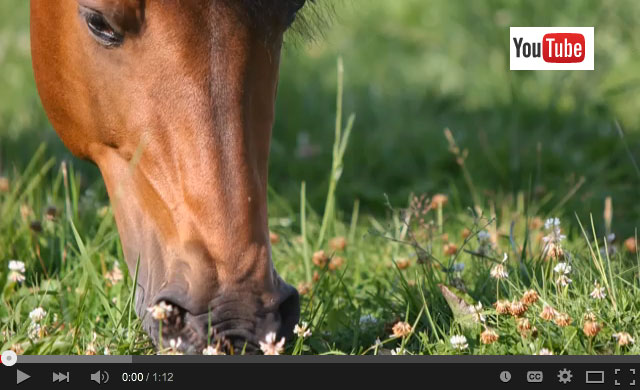
Spring Pasture Dangers
Fast Facts
Limit access to lush pasture in at-risk horses, especially in the spring and fall.
- Limit grazing or stop it completely when daytime temperatures are warm and nights are below 40° F (spring and fall).
- When days are sunny and nights are warm, limit grazing to the early morning.
- Grazing in the late afternoon or evening on a warm sunny day is risky.

Tips and Topics
Feeding starch/sugar sensitive horses
A better understanding of how the horse’s digestion system works has revealed that balancing forage intake with concentrate intake is necessary when feeding horses, and even more critical when feeding starch/sugar sensitive horses. Read full article.
Infographic: What is fructan overload?
Click image below to download.
In The Spotlight
Grazing management for sugar-sensitive horses
Lush, cool-season spring grass is packed full of vitamins, minerals and energy, but it is also high in sugar! Sugar-sensitive horses grazing on lush pasture can develop colic and laminitis. Because grass is your horse’s best source of natural vitamin E, horses that are restricted from grazing are at risk for developing vitamin E deficiencies.
Click here to watch the video.
Maintain healthy muscle and nerve functions
 Purchase
Purchase


"*" indicates required fields



